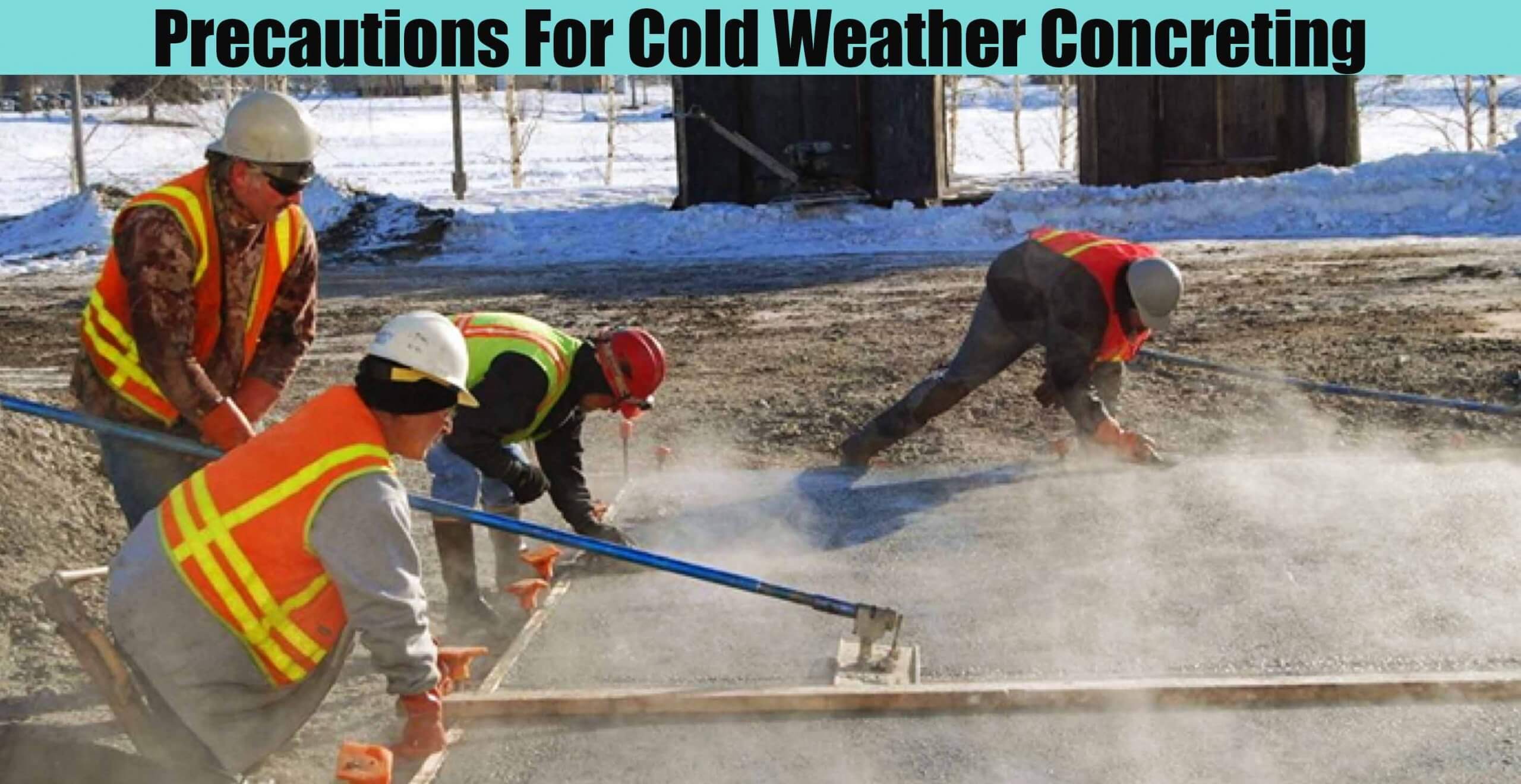Why Cold Weather Concreting is Challenging?
The hydration of cement is a chemical reaction. Extremely low temperatures, as well as freezing, can significantly slow down the reactions, thus, affecting the strength growth. In fact, freezing temperatures within the first 24 hours (or when concrete is still in the plastic state), can reduce the strength by more than 50%. The minimum strength before exposing the concrete to extreme cold is 500 psi (3.5 MPa). CSA A 23.1 specified a compressive strength of 7.0 MPa to be considered safe for exposure to freezing.
What Happens When Concrete Freezes?
1- Porewater in concrete starts to freeze around -1°C (30°F)
2- As some water freezes the ion concentration in the unfrozen water goes up, further depressing the freezing point.
3- At around -3 to -4°C (25 to 27°F), enough of the pore water will freeze so that hydration will completely stop, and depending on the extent of hydration, and thus the strength of the concrete, the forces generated by the expansion of ice (ice occupies ~9% more volume than water) may be detrimental to the long term integrity of the concrete.
What is Cold Weather for Concrete?
American Concrete Institute definition of cold weather concreting, ACI 306, is:
1- A period when for more than three successive days the average daily air temperature drops below 40 ˚F (~ 4.5 °C), and
2- Temperature stays below 50 ˚F (10 °C) for more than one-half of any 24 hour period.
In Canada, where temperatures tend to be much lower during the cold season, the following criteria are used by CSA A23.1:
1- When the air temperature is ≤ 5 °C, and
2- When there is a probability that the temperature may fall below 5°C within 24 hours of placing the concrete.
Precautions for Cold Weather Concreting
1- Hot water (60°C) and aggregates (15°C) should be mixed before adding cement content in the mix.
2- Concrete should be placed at a temperature of 4° -5° C. After placing and compacting the temperature should be kept at 2°C until it becomes hardened.
3- To prevent flashing, cement should not be added alone with water.
4- Do not use frozen aggregates in the mix.
5- Accelerating admixtures (mainly calcium chloride) can be used to increase the internal temperature of concrete.
6- Damaged concrete due to frost action should be eliminated.
7- Formwork should be cleaned and free of snow or ice.
8- To keep the temperature at constant and to protect the concrete from frost action, the concrete surface should be covered with dry blankets of cement bags, staws, tarpaulins etc.
9- Curing should be extended for a longer period.
10- Formwork should be removed after a longer period.

